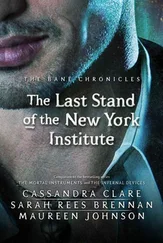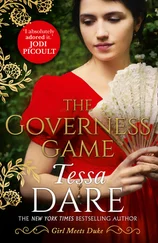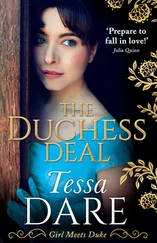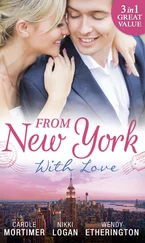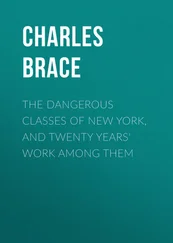Aspiring writers who had editorial jobs or even wrote unsigned pieces for magazines still wanted to have their own work published under their own name, and so they looked to the “little magazines” for outlets. “Before I got my first byline at Vogue ,” Joan Didion remembers, “I was sending things to other magazines. The first piece I ever published was about a quiz show I’d been on. I sent it to The Reporter first and got a nice note back, but they didn’t take it. Then Noel Parmentel, who had written for National Review , sent it to NR and they published it. I got to know Frank Meyer, who was editor of NR ’s back-of-the-book section, and began writing for him. NR started the writing careers of many people, like me, Renata Adler, John Leonard, Arlene Croce. All of us started writing our first freelance pieces for Frank Meyer.”
Another person who got his start as a published writer at National Review was Joan’s husband, John Dunne: “Joan and I had gotten to be good friends and often had dinner together. She was writing for National Review , and she was their young literary star. We were riding uptown in a cab one night and she said she’d been asked to do a piece for them on Edwin O’Connor’s new book, The Edge of Sadness , and she didn’t want to do it. I said I’d like to do it, and I wrote about growing up Irish Catholic in Hartford and NR published it. You got $25 for a review or a back-of-the-book piece. If you wrote for NR you were either a true believer in the conservative cause or a young person who wanted to get your stuff published.
“At the tag end of the fifties,” John adds, “we all for the first time were beginning to get published. We’d made some connection—it didn’t matter whether it was The Nation or National Review or Time .”
Joan agrees: “Yes, it was like not being a freshman anymore.”
There were those who didn’t get published, of course, people who sometimes seemed as talented, if not more so, than those of us who did get our work in print. Some of them went back home to the Midwest, the South, or wherever else they had started from. Some stayed on in New York and found other means of expression and ways of making a living. The “starving artist” life lost its glamour after a few years, and people wanted, if not a little fame, at least a little fortune.
“I’m hungry,” my friend Ted the Horse said one night at a party in the Village. At first I didn’t understand, and suggested we go to Jim Atkins’s hash house on Sheridan Square for eggs or pancakes.
“That’s not what I mean,” he said.
From the fierce look in his eye, I got it. He wanted to make some money. He was going to get what we called a real job. In preparation, he and I and his other friends read The Organization Man , which contained an appendix for the aid of those who wanted to be employed by big companies. It was titled “How to Cheat on Personality Tests.” The first rule to remember in trying to decide the best answer to any psychological-test question was “I loved my mother and my father, but my father a little bit more.” (The presumption was that anyone applying for a serious job in the business world was a man.)
Ted got a kick out of that and began to repeat it, making it a kind of refrain. The rest of us would join in, singing this key to success, jazzing it up, riffing on it as we went along, slapping our knees, clapping, as if this were some great tribal chant or hip new beat from the world of bop: “I-love-my-mother-and-my-father—but-my-father-a-little-bit-more.”
Ted landed a job at McGraw-Hill, in the media department, where he learned to make slide shows and films, and later went on to launch Steeg Productions, his own company, for which he wrote, produced, and directed prizewinning documentaries and films for business, which took him on shooting locations around the world. It was not the voyage of the Pequod , but it used his creative talent and earned him a good living.
I may not have had a regular salary, and my fees for Nation articles were modest—Calvin Trillin later reported that for his column that magazine paid “in the high two figures”—but I had some great fringe benefits. George Kirstein used to invite me to the penthouse he and his wife, Jane, kept at the One Fifth Avenue Hotel, for drinks and dinner with friends; or I’d go up to their house in Mamaroneck for lunch and a swim (he was the first person I knew who had a private swimming pool); or I’d watch the America’s Cup races from his sailboat. His pool had those floating chairs with a hole cut out of the arm to hold a drink, and leaning back in one of those with a Bloody Mary, discussing world events with George, I felt like the Negro boy in Philip Roth’s Goodbye, Columbus when he looks at a library book of Gauguin paintings and says, “Ain’t that the fuckin life.”
My connection with The Nation gave me a base to begin a shaky subsistence—but one I would not have traded for anything less free and glamorous—as a writer in New York, living hand-to-mouth on the kind of writing known in the trade as “pieces.” Later, toward the darker end of my New York days, I came to think of them as pieces of myself. Some of them seemed torn out of me unwillingly, by the roots, or what macho fellows in those days referred to as the short hairs, as the pressures of paying the rent and producing article after article mounted to an unrelenting treadmill of production. At the beginning, though, each byline provided a shot of adrenelin, each assignment a challenge and a chance for exploration of the city and its mysteries, unveiling new places and people, sounds and scenes.
My English writer friend in the Village, Sarel Eimerl (“a seriously witty man,” according to Bruce Jay Friedman), described our profession with the elegant phrase “living by the pen.” He said it with a certain irony, as we calculated such mundane problems as how to pay the gas bill. The exciting thing was that I was getting published, and a world of stories was out there waiting. Again the words of John Reed came to mind: it was like being “on the edge of a beautiful dream.”
The only time I’d been to the Bowery was to drink at McSorley’s, a saloon known for its cheap beer, sawdust on the floor, and the fact that it didn’t allow women. It was a curiosity, the sort of lowlife place that college boys and other tourists could visit to feel they had gotten a taste of the infamous Bowery, whose name was synonymous with bums, men who huddled in doorways with bottles of rotgut wine in paper bags. The Bowery was still the symbol of poverty in a time of prosperity, a kind of sinkhole where people of all nationalities, even homegrown Americans, had fallen down. There was poverty, too, in the teeming streets of the Lower East Side, where the immigrants from Europe and their children were still struggling upward, and poverty in Harlem, where Negroes from the South and Puerto Ricans new to the mainland were trying to adapt and better themselves; but the Bowery was the bottom, and people who had descended to it were not expected to rise.
When my friend Sam Astrachan said he wanted to take me down there to meet a “character” I ought to write about, I assumed at first he meant a colorful Bowery bum. Now that he was about to be a published novelist, Sam was trying to help my budding career as a journalist. It was the summer of 1955, and after publishing my first story in The Nation , I was roaming the city in search of other subjects and doing research for C. Wright Mills the rest of the time.
I regarded New York not only as my new home, where I’d surely live the rest of my life (how could anyone of intelligence choose to live anyplace else?), but also as a fabulous source of stories, a bursting cornucopia of people and places to write about.
Читать дальше

